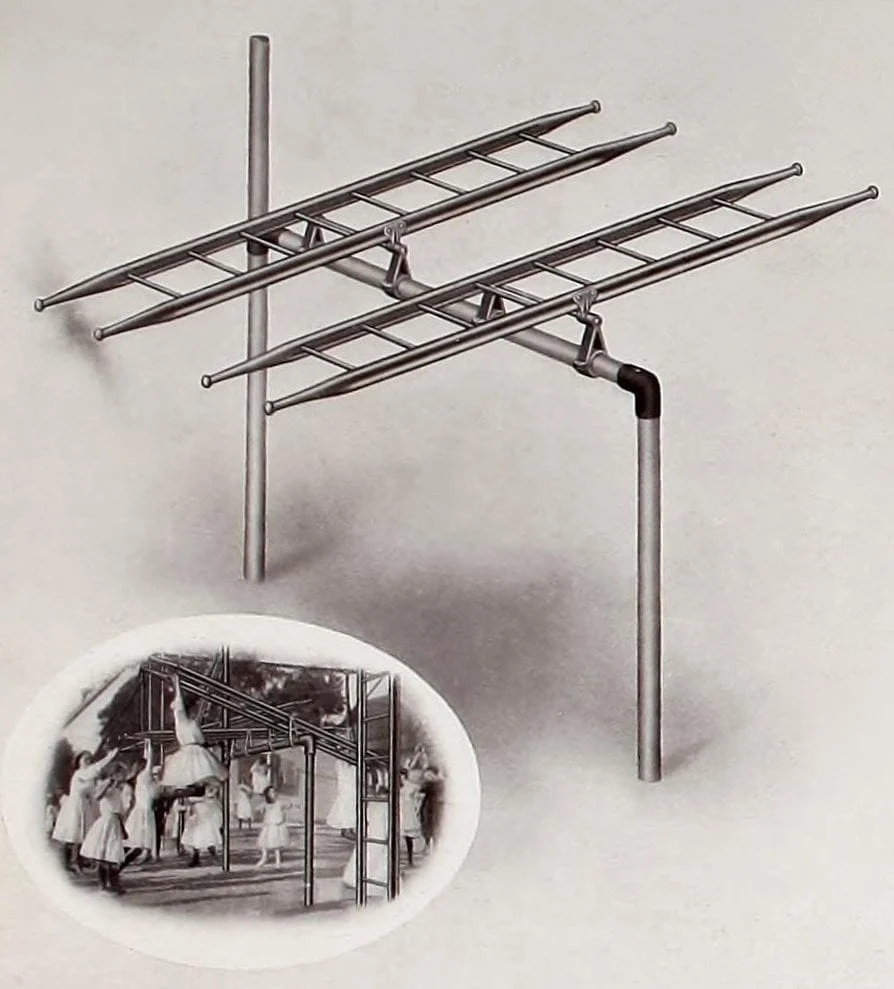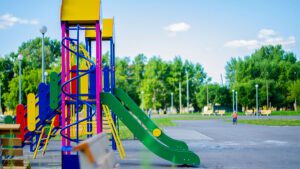Playground equipment has evolved significantly over the years, prioritizing child safety while ensuring that playtime remains fun and educational. If you take a look back at the playground equipment banned over the years, you’ll quickly realize how far we’ve come in terms of design, safety, and materials. Outdated designs and dangerous materials led to numerous injuries, and these improvements reflect our commitment to creating safer spaces for children. In this article, we will take a deep dive into the ten most bizarre playground items that were banned, and explore why they were deemed dangerous.
Why Playground Equipment Gets Banned
Playground equipment has seen dramatic changes throughout history, with one of the most significant driving forces being the increased focus on child safety. Older playgrounds featured equipment that was often unsafe, with hazardous materials like concrete floors and metal structures that led to a high rate of injuries.
In the past, safety standards were often minimal, and many playground structures lacked any real safety tests before being placed in schools and parks. For example, swings with high swings and hard materials used to be a common sight, but these dangerous designs sometimes caused serious accidents.
Today, safety regulations are much stricter, with equipment requiring approval from governing bodies like the Consumer Product Safety Commission (CPSC) before being allowed in children’s play areas. These standards have resulted in significant improvements, making playgrounds safer and more accessible to children of all abilities.
The History and Evolution of Playground Equipment
Early playgrounds featured simple designs, such as monkey bars, merry-go-rounds, and log swings. However, many of these pieces of equipment were constructed without considering safety, often containing sharp edges or being made from materials like concrete that were both hard and dangerous.
With the introduction of new safety tests, the design of playground equipment has drastically changed. For example, equipment made of lead paint and hazardous metals has been replaced with more durable and child-friendly materials like rubber mulch and wood chips, which help absorb impact and reduce the risk of injury.
What Causes Playground Equipment to Be Banned?
Playground equipment gets banned for various reasons, but the primary concern is safety. In past decades, playground equipment didn’t go through any substantial testing before it was put into public spaces. As we have learned from numerous accidents, older designs often lacked essential features like shock-absorbent surfaces and appropriate materials that could minimize injury risks.
For instance, wooden playgrounds once dominated many parks, but these have largely fallen out of favor because they caused splinters and required extensive maintenance. Likewise, concrete surfaces, gravel, and heavy metal components posed risks such as concussions, abrasions, and even poisoning in the case of lead-based paints. The need for safer, well-maintained playgrounds has driven significant changes in how these spaces are designed.
Top Ten Banned Playground Equipment
The following is a look at ten of the most dangerous and bizarre playground equipment items from the past. These items were banned not just for their odd designs but also for the significant safety risks they posed.
1. Swinging Gates
Swinging gates were a popular but extremely dangerous playground feature. The gate was attached to a single pole, and children would hold onto a bar while trying to swing around the pole. Without a secure standing platform, kids risked falling off and even getting their toes caught in the slats. The heavy, often metal, gates posed a risk of injury, making them a major hazard on playgrounds.
2. Giant Strides
The Giant Strides, inspired by the maypole tradition, featured a large vertical pole with ropes attached to it. Children would run around the pole and attempt to leap into the air for a brief moment of flight. However, the design required a lot of coordination and teamwork, and many children would collide with each other or the pole, resulting in abrasions and serious injuries.

3. Log Swing
The Log Swing was essentially a long wooden or metal beam that kids would swing back and forth. The problem? It could easily swing unpredictably from side to side, especially when multiple children crowded onto it. The lack of control and heavy swing resulted in serious accidents, often involving kids crashing into each other or the structure itself.
4. Teeter Ladder
A combination of jungle gyms and teeter-totters, the Teeter Ladder was a structure that consisted of two ladders attached to a horizontal bar. As kids climbed the ladders, the bar would tip, causing a jarring and potentially dangerous movement. This equipment often caused falls and injuries, especially when children lost their grip or coordination.

5. Poised Safety Swing
Intended to launch children safely into a pool, the Poised Safety Swing was far more dangerous than its name suggested. The swing’s design involved a tall ladder that children climbed before swinging off into a body of water. However, the mechanism sometimes failed, leading to children falling from high heights. The swing’s potential to harm the rider or others around it led to its eventual banning.

6. Racer Slides
Racer slides were tall, metal slides designed to satisfy kids’ desire for speed. However, these slides were not only narrow but also extremely dangerous. Children often slipped, and the slides became dangerously hot in the summer, leading to burns. The high heights of these slides also posed a significant risk of injury upon landing.
7. Witch’s Hat
The Witch’s Hat was a merry-go-round with a central pole and a rotating frame. Children could run around the frame or cling to it as it spun. However, the risk of falling through the structure, getting trapped, or hitting the pole at high speeds made it an unsafe piece of equipment. Today, versions of this exist with safer designs that prevent falls and have slower rotation speeds.
8. Animal Swings
These swings were designed in the shape of animals, like ducks or chickens, and were usually very colorful. While fun in appearance, they were extremely heavy and difficult to control. Children often got injured from the swings hitting them or crashing into other kids. Moreover, the heavy metal construction made these swings hazardous, especially when children were hit by them.
9. Barrel-of-Fun
The Barrel-of-Fun consisted of a large barrel that spun around a central pole. Children would try to hold onto the barrel as it spun, or they would try to perform tricks like somersaults. The barrel often reached dangerously high speeds, throwing children off and causing injuries. The hard concrete surface it sat on also made it an unsafe choice.
10. Giant Slide (Racer Slide)
These massive, metal slides were a feature in many playgrounds in the mid-20th century. While the thrill of sliding at high speeds excited many children, these slides were narrow, made of hot metal, and posed significant risks. The danger of falling off the slide or landing incorrectly on a hard surface led to the eventual phase-out of these structures.
The Impact of Banned Equipment on Modern Playgrounds
The banning of these playground structures has shaped the playgrounds we see today. Modern playgrounds now feature safer, more accessible equipment designed to prevent injuries. Equipment like the climbing wall, rubber swings, and inverted teeter-totters provide the same thrills without the risks. Playground designs also prioritize inclusivity, offering features like wheelchair-accessible swings and transfer stations to ensure that all children, regardless of ability, can enjoy the playground.
The Role of Technology in Playground Safety
Technology has played a significant role in modern playground safety. With innovations in materials and safety features, such as impact-absorbing surfaces and safer swing materials, playground equipment is now more durable and safer than ever before. Advances in design have led to better monitoring systems that help identify and address potential safety concerns before accidents happen.
Additionally, technological tools such as sensor-based monitoring systems and child safety gates have helped ensure that playgrounds stay safe for all children. Thanks to these technological advancements, playgrounds today provide an experience that is not only fun but also significantly safer.
Conclusion
Over the years, playground safety standards have come a long way. While the designs of many older playground pieces may seem fun and innovative, they were often unsafe and led to frequent injuries. Today, safety and accessibility are the top priorities in playground design. As we continue to develop better materials and technologies, playgrounds will only get safer, providing children with a fun and secure environment to play and grow.




